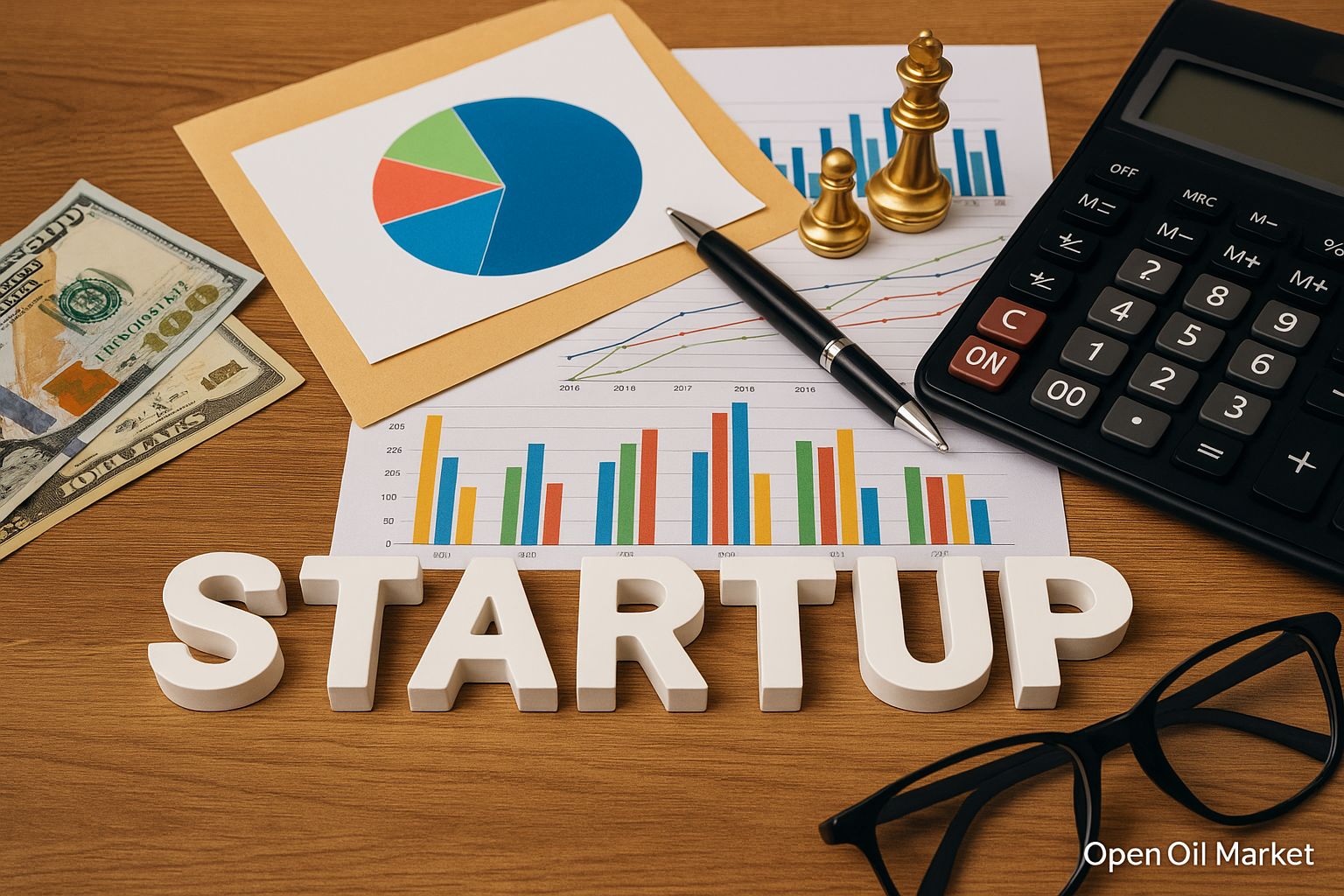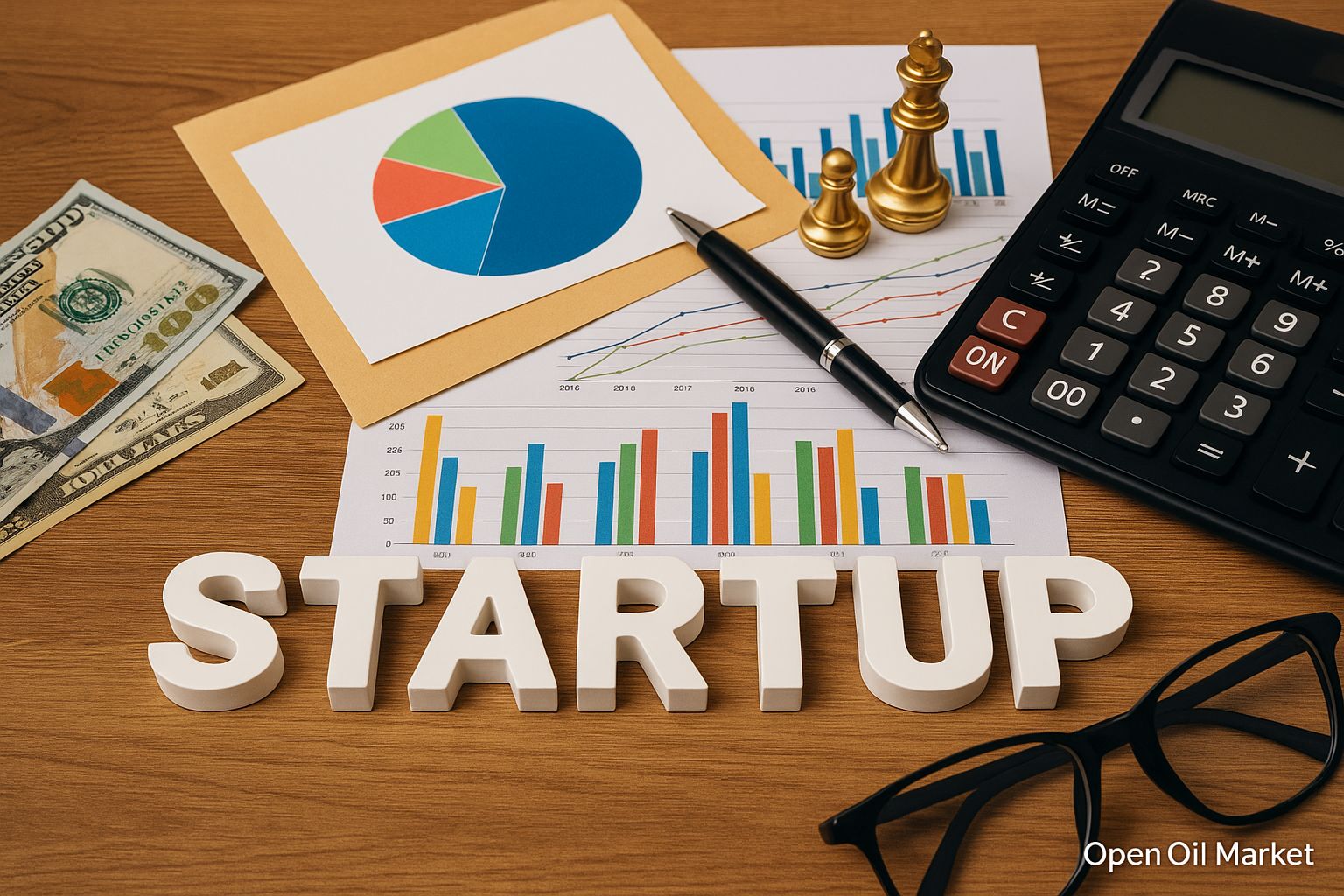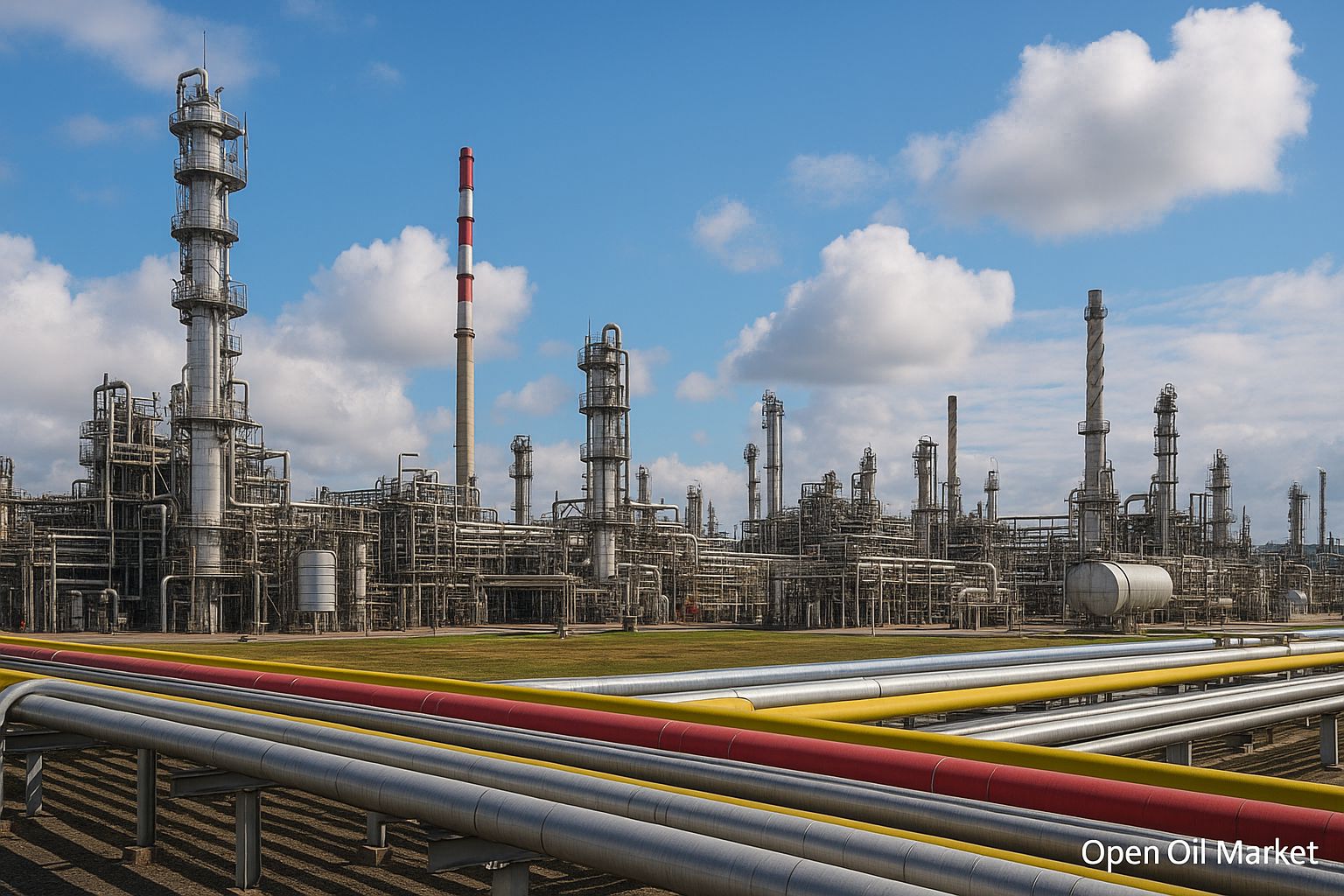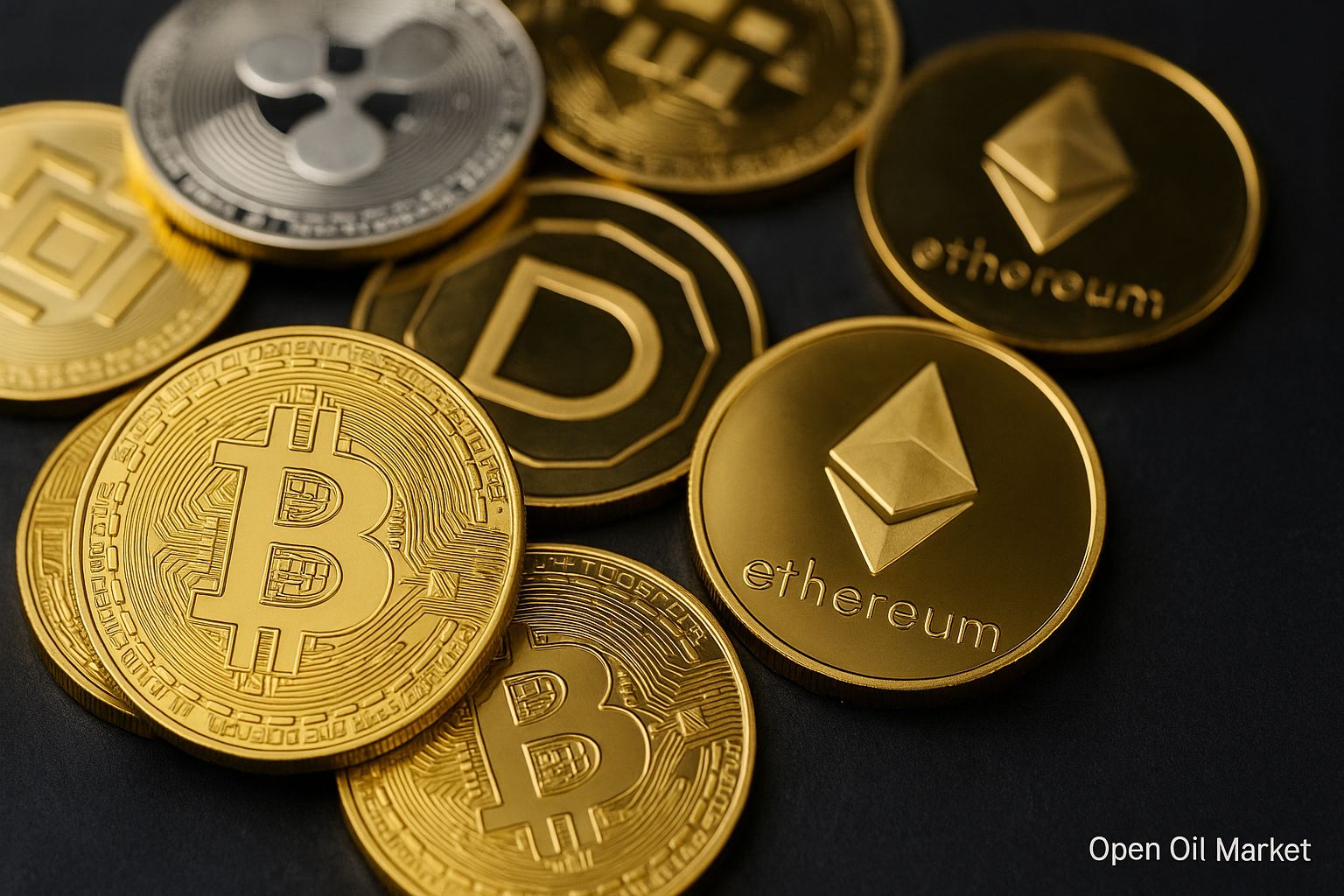
Startup and Venture Capital News for Thursday, August 21, 2025: Mega Rounds in AI, New Unicorns, IPO Activity, and Global Expansion of Venture Capital. Analysis of Trends and Prospects for Investors.
By the end of August 2025, the global venture capital market is confidently emerging from a prolonged downturn. Investors worldwide are actively financing technology startups again, closing deals at record amounts, and IPO plans for promising companies are once again in the spotlight. Major funds and corporations have resumed large-scale investments and are launching new venture programs, while governments in different countries are increasing support for innovative businesses, striving to keep pace in the global technology race.
Analysts estimate that the first half of 2025 was the most successful since 2021 in terms of total venture capital investments. In the United States and Canada alone, startups attracted about $145 billion in investments during this period, marking a 43% year-on-year increase and a record for the last three years. The overall influx of capital into the venture market has significantly risen, largely due to a series of mega funding rounds in the artificial intelligence sector.
Venture activity is now spanning all regions—from Silicon Valley and Europe to Asia, the Middle East, Africa, and Latin America. North America shows particularly high dynamics, accounting for up to 70% of global investments, a significant portion of which is directed toward the AI sector. Meanwhile, the Middle East is experiencing a real surge, with investments in regional startups reaching ~$2.1 billion in the first half of 2025, a 134% increase compared to the previous year. Europe is witnessing a landscape reshaping: Germany has surpassed the UK in terms of venture investments for the first time in a decade, reflecting the strengthening of continental startup ecosystems.
In Asia, the situation is heterogeneous: startup funding in China remains weakened, experiencing about a 33% decline year-on-year, while India, Israel, Southeast Asia, and Gulf countries show growth and are attracting increasing amounts of capital. Even local markets, such as CIS countries, are trying to catch their wave of uplift in spite of external constraints. Overall, a new global venture boom is forming, although investors remain selective and cautious in their deals.
Below are key events and trends defining the current agenda of the venture market as of August 21, 2025:
- The Return of Mega Funds and Large Investors. Leading venture players are forming record funds and increasing investments, once again saturating the market with capital and fueling risk appetite.
- Mega Rounds in AI and New “Unicorns”. Unprecedented investments are boosting startup valuations to unseen heights, particularly in the artificial intelligence segment.
- Revival of the IPO Market. Successful public market entries by tech companies and new applications confirm that the long-awaited “window” for exits has opened once again.
- Diversification of Sector Focus. Venture capital is being directed not only into AI but also into fintech, climate projects, biotechnology, defense developments, and even crypto startups, broadening market horizons.
- A Wave of Consolidation and M&A Transactions. Major mergers, acquisitions, and strategic investments are reshaping the industry landscape, creating new opportunities for exits and accelerated company growth.
- Global Expansion of Venture Capital. The investment boom is spreading to new regions—from the Gulf and South Asia to Africa and Latin America—where their own tech hubs are forming.
- Local Focus: Russia and CIS Countries. Despite constraints, new funds and initiatives are emerging in the region to develop local startup ecosystems, increasing investor interest in local projects.
The Return of Mega Funds: Big Money Back in the Market
The largest investment players are triumphantly returning to the venture arena, signaling a renewed appetite for risk. The Japanese conglomerate SoftBank, having weathered the downturn, announced the launch of the $40 billion Vision Fund III, targeting advanced technologies, primarily artificial intelligence and robotics. Simultaneously, sovereign funds from Gulf countries have become more active, pouring billions of dollars into innovative projects and developing state mega-programs to support the startup sector, thereby forming their own tech hubs in the Middle East. Additionally, dozens of new venture funds (including corporate ones) are being launched worldwide, attracting significant institutional capital for investments in high-tech sectors.
Esteemed investors from Silicon Valley are also increasing their presence. In the American venture sector, funds have accumulated unprecedented reserves of uninvested capital (“dry powder”)—hundreds of billions of dollars ready to be deployed as confidence returns to the market. For example, Andreessen Horowitz has announced the raising of a new mega fund of about $20 billion, fully focused on investments in AI companies—one of the largest targeted funds in the industry. The influx of “big money” is filling the startup market with liquidity, providing resources for new rounds and supporting the growth of valuations of promising companies. The return of mega funds and large institutional investors not only increases competition for the best deals but also instills confidence in the industry regarding continued capital inflow.
Mega Rounds and New “Unicorns”: Investments Hit Records
The artificial intelligence sector continues to be the main driver of the current venture boom, demonstrating record financing volumes. Investors are allocating colossal amounts of money to the most promising projects, raising startup valuations to unprecedented heights. For example, the American company Databricks raised a new Series K round, increasing its valuation by 61% to over $100 billion; these funds will be used for developing AI products and strategic acquisitions. Elon Musk’s startup xAI has raised about $10 billion in total (including equity and debt financing), achieving a valuation of around $100 billion, placing it among the world’s most valuable AI companies. OpenAI received another tranche of about $8 billion with an estimated value of around $300 billion—both mega rounds were substantially oversubscribed, highlighting the frenzy surrounding industry leaders. Other players are not lagging behind: the Canadian AI startup Cohere raised $500 million in August at an estimated valuation of ~$6.8 billion, confirming its status as a “unicorn” and investors’ interest in new contenders.
The current investment boom is generating a new wave of "unicorns". According to some estimates, nearly 500 private companies in the AI sector are currently valued at over $1 billion (their total valuation approaches $2.7 trillion), with about 100 of them founded since 2023. Additionally, over 1300 AI startups have valuations of no less than $100 million. Although experts caution about the risks of overheating, investor appetite for AI projects has not yet weakened.
The IPO Market Revives: The “Window” for Exits is Open
The global IPO market has noticeably revived after a long pause and continues to gain momentum. A new wave of IPOs was initiated in Hong Kong: several major technology companies have successfully gone public in recent weeks, collectively raising billions of dollars. For example, one of the leaders in the battery industry raised about $5 billion through its IPO, demonstrating that investors in the region are once again ready to actively participate in public offerings.
In the U.S., the IPO market also saw significant improvement. Fintech “unicorn” Chime went public this summer, with its shares rising by about 30% on the first day of trading. Following it, the design platform Figma conducted its IPO, attracting around $1.2 billion at an estimated valuation of $15-20 billion; its share prices went up steadily in the first few days of trading. Several well-known startups, including payment service Stripe and a number of highly valued companies in the AI and SaaS sectors, are preparing to enter the public markets in the second half of 2025. Even the crypto industry is looking to take advantage of the opened “window”: fintech company Circle successfully went public, and the cryptocurrency exchange Bullish has submitted an application for listing in the U.S. with a target valuation of around $4 billion.
The return of activity in the IPO market holds significant importance for the venture ecosystem: successful public exits allow funds to realize profitable exits and redirect freed capital into new projects, thereby supporting further industry growth.
Diversification of Investments: New Sectors on the Rise
In 2025, venture investments are covering an increasingly wide range of industries and are no longer limited to AI alone. Following last year's slump, there is a noticeable revival in fintech: major funding rounds are occurring not only in the U.S. but also in Europe and developing markets, fueling the growth of new financial services. Concurrently, interest in climate and "green" technologies is increasing—these areas are attracting record investments amidst the global trend towards sustainable development.
The appetite for biotechnology is returning: the emergence of promising medical innovations and healthtech platforms is once again attracting capital as the industry recovers from a period of declining valuations. Additionally, amid heightened attention to security, investors are increasingly supporting defense and aerospace projects. A telling example is the American company Anduril Industries: the startup raised $2.5 billion, doubling its valuation to ~$30 billion, underscoring high demand for high-tech defense solutions. The partial restoration of trust in the crypto market is also noticeable, with some blockchain startups beginning to receive funding again. As a result, the expansion of the sector focus is making the startup ecosystem more resilient and reducing the risk of overheating in specific segments.
Consolidation and M&A Deals: Players Are Getting Larger
Inflated startup valuations and fierce competition for markets are driving the industry towards consolidation. Major mergers and acquisitions are once again coming to the forefront, reshaping the balance of power in the technology sector. For instance, Google has agreed to acquire the Israeli cybersecurity startup Wiz for approximately $32 billion—a record amount for the Israeli tech industry. Another example is an American software manufacturer announcing the acquisition of a European AI startup, solidifying its presence in a new market.
Such mega deals demonstrate tech giants' determination to acquire key developments and talent. Many corporations prefer to buy innovative projects rather than developing similar technologies from scratch. Overall, the surge in acquisition activity indicates market maturation: established startups are merging with each other or becoming of interest to major players, and venture investors are given opportunities for long-awaited profitable exits. The wave of M&A deals opens new pathways for capital exits, enabling funds to secure income and fostering the emergence of larger companies capable of successfully competing on a global scale.
Global Expansion of Venture Capital: New Markets Gaining Traction
The venture boom of 2025 is acquiring a truly global scale, encompassing markets that were recently on the periphery of the tech stage. The Middle East, for example, is forming its own tech hubs: Gulf countries are actively financing local startups and attracting international capital into their ecosystems. South Asia is also experiencing a rise: India and Southeast Asian states are recording a record influx of venture investments and an increase in the number of unicorns. Own startup clusters are rapidly developing in Africa and Latin America—from fintech centers in Nigeria to e-commerce successes in Brazil.
Major venture funds are now closely monitoring promising projects worldwide—from Singapore and Dubai to Nairobi and São Paulo—trying not to miss the next "diamond" of the tech scene. Founders from various countries are granted unprecedented opportunities to raise capital, and the venture market is becoming increasingly international. New funds, accelerators, and support programs are being launched in different regions to develop local ecosystems. Thus, the investment boom is spreading to new territories, integrating them into the global innovation economy.
- Middle East (MENA): startups in the region raised ~$2.1 billion in the first half of 2025 (+134% year-on-year); the largest contributions to growth came from the UAE and Saudi Arabia.
- Africa: funding for African startups reached ~$1.35 billion in the first 6 months of 2025 (a growth of 78% compared to the previous year); record deals were recorded in Nigeria, Egypt, and Kenya.
- Latin America: venture funding in the region increased by 16% in the 2nd quarter of 2025 (quarter over quarter), with Mexico surpassing Brazil for the first time since 2012 in terms of investment volume thanks to large rounds (for instance, Mexican fintech Klar raised $170 million).
Europe is also strengthening its position: Germany, France, and Northern European countries have increased venture investments, while in the UK, growth slowed after Brexit. The situation in Asia is mixed: amidst a downturn in China, India, Southeast Asia, and Israel are demonstrating steadily high capital attraction rates, with Israel achieving its maximum deal volume in the last two years. Even in less developed markets, such as Africa and Latin America, local "unicorns" are emerging, while governments and corporations are actively supporting technological initiatives. Thus, the global startup ecosystem is becoming more distributed: new centers of innovation are gaining strength outside traditional startup capitals.
Russia and CIS: Local Initiatives Amid Global Trends
Despite external constraints, active steps are being taken in Russia and neighboring countries to develop their own startup ecosystems in line with global trends. At the St. Petersburg International Economic Forum (SPIEF-2025), a new venture fund was announced with the participation of the state bank PSB, with a target volume of around 12 billion rubles for investing in dual-use projects—from drones and AI to robotics. PSB acts as the anchor investor for this fund, also attracting private capital; even amidst sanctions, the market seeks opportunities to finance priority technologies and cultivate its own "unicorns."
Simultaneously, some regional startups are reaching new heights. For instance, the Krasnodar foodtech project Qummy raised ~440 million rubles with a valuation of about 2.4 billion rubles, preparing for an IPO—this case demonstrates the seriousness of the technological business aspirations in Russian regions. In Kazakhstan, the state fund Qazaqstan Venture Group has been created with a volume of $1 billion to support AI startups and a new wave of technological projects. Additionally, in July 2025, Russian authorities eased restrictions for foreign investors: they are once again permitted to acquire shares in Russian companies and freely withdraw capital. This step is aimed at reviving international investments in the economy and the venture sector, despite the geopolitical situation.
Individuals from CIS countries are already achieving global success, integrating into the world industry. For instance, the AI startup Perplexity, founded by a Belarusian entrepreneur and based in the U.S., recently raised an additional ~$100 million, bringing its valuation to ~$18 billion. Another example is the Dubai project Xpanceo, founded by a Russian and a Ukrainian: it raised about $250 million in a Series A round at a valuation of $1.3 billion for the development of "smart" AR contact lenses. These cases confirm that innovative projects with roots in the region can compete at the forefront of the global technology arena.
While the scale of the venture market in the CIS is currently smaller than in the West, a foundation for future growth is being laid. Investors are shifting focus to more mature projects with proven business models, and the government is expanding support—from IT education development to creating a network of regional accelerators. Local startups are striving to enter global value chains, relying on strong competencies in high-tech niches (AI, big data, cybersecurity, etc.). Despite all challenges, Russia and its neighbors are gradually building their own venture landscape, hopeful of earning a respectable place in the global technology race over time.
Conclusion: Cautious Optimism and Quality Growth Priority
As autumn 2025 approaches, sentiments in the venture industry remain cautiously optimistic. Record deals and successful IPOs instill confidence that the bottom of the recent downturn has been crossed; however, lessons from previous years keep the market from excessive euphoria. Investors are now much more attentive to the quality of startups' growth and their ability to build sustainable businesses, preferring companies with proven business models and nearing profitability.
A significant influx of capital into the sectors of AI, fintech, and cybersecurity strengthens faith in the industry's continued development. Meanwhile, funds are paying increased attention to risk diversification and a balanced approach to valuations. If macroeconomic conditions remain favorable, the market could accelerate growth in the second half of the year.




